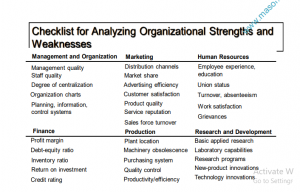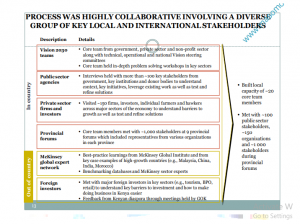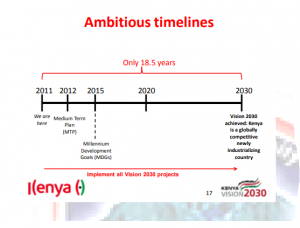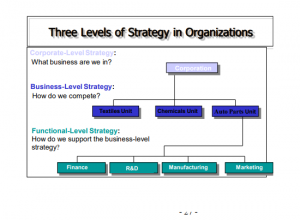• Managerial Philosophy. The managerial philosophy determines the actions which managers take towards various factors affecting their decisions. Such factors may include the environmental forces as well as the various internal forces. If the managerial philosophy is positive, the managers are likely to take into account the various factors affecting the organization while making decisions.
• The term managerial philosophy includes manager’s attitudes, reactions to situations, and the way of looking at the things. If these are positive, they may go for long-term actions for which they require more information about the environment. From this point of view, managers can be classified into two categories’ those who are forward- locking and those who keep themselves busy in the day-to-day affairs of the organization. It is the latter category of managers who do not put great emphasis on the environmental search and
analysis. They lead stagnant organization. They focus on a very narrow range of the environment and tend to over-emphasize details instead of focusing on the long-term impact and leaving the details of their subordinates. They feel more satisfied by the past
and present performance of their organization rather than looking into the future. Sometime even the internal environment of the organization may compel to believe so.
For example, the reward and punishment system of the organization may emphasize on the present performance rather than on the long-term planning which may modify the manager’s thinking to look into the present. Then tries are managers who believe that take care of present, future will take care of its own. Naturally the range of environmental analysis for such managers is limited.
• On the other hand, forward-looking managers think of future keeping in mind the happening in the present. They look for various opportunities in the environment. They believe that opportunities knocks the door for once. If you miss this, you miss for ever.
Naturally such managers will be more conscious about what is happening outside their organizations. For this purpose, they go for seeking maximum information from the environment. Thus the managerial philosophy determines the volume and type of
information that manager will seek from the environment. However, it can be mentioned, that if a top level manager is not spending his 15-20 per cent time on strategic management and interacting with the environment, he is certainly leading to slow death
of his organization.
• Age of the Organization. The age of the organization may also determine the type of information that can be sought by it, the organizational growth over the period of time requires different type of interaction with its environment. Generally older is the age of
the organization with the more experienced managers, the narrower will be the focus on the environmental ‘ information because with the experience, manager may be able to distinguish either what is relevant or irrelevant of the organization. The necessary information may be sought and unnecessary will be screened out. Since the information can be tested to determine the organizational effectiveness by the managers, they can easily know the relevance of a particular piece of information.
• Size and Power of the Organisation. Size is an important factor (or determining the interaction with the environment. Normally larger is the size of the organisation, more will be its interaction with its environment. When an organisation is small, it may be
exempted Irom various legal provision, with regard to its various management practice. For example, the various labour legislation are applicable only when the organisation has achieved a certain size. Similarly, the organisation is covered by MRTP Act or Industries (Development and Regulation) Act after it has achieved certain size.
• The relative power of the organisation vis-a-vis its external environment determines the extent to which the organisation can control or is controlled by the environmental forces. If the organisation is strong in respect of certain environmental factors, it is unlikely to
focus attention on this aspect.

Formulation of a corporate strategy should be collaborative
A strategy should be participatory in the sense that all stakeholder s are involved. At global level, this happened in Singapore and Malaysia. Locally the country‘s blue print was equally collaborative as shown below.

The strategy should have a time frame. A local example is Kenya‘s national time frame as shown below:-

Business Strategy
Business Level: Strategic Business Unit (SBU) managers (e.g.. Divisional General Managers), are involved at this level in taking strategic decisions. Here” strategies are about how to compete in particular product-markets. The strategies are related to a unit within the organization. On this point it also important to mention operating level strategy. This third level of strategy is at the operating end of the organization. Here, the strategies are concerned with how the different functions of the enterprise like marketing, finance, manufacturing, etc. contribute to the strategies of other levels. These contributions are important in terms of how can an organization become competitive. Competitive strategy depends to a large extent on decisions about market entry, price, product offer, financing, manpower, investment in plant, etc. In themselves these decisions are of strategic importance but are made, or at least strongly influenced at operational levels.
ELEMENTS
Strategic Management is concerned with deciding on the strategy and how the strategy is to be put into action. Strategic management has three main elements: strategic analysis, strategic choice, and strategy Implementation.
Strategic Analysis: This is concerned with understanding the strategic situation of the organization and its effects on the organization, assessment of its resources and strengths in the context of these changes, effect of the changes on people and on their present and future aspirations.
Strategic Choice: Strategic analysis provides a basis for strategic choice. This is concerned with the formulation of possible courses of action, their evaluation and the choice between them. This means that the strategic choice has three parts to it- generation of strategic options, evaluation strategic options and selection of strategy.
Strategy Implementation: This is concerned with translation of general directions of strategy into action. This is also as important as strategic analysis and choice. Implementation involves resources planning in which logistics of implementation are examined. It also takes into account the organization structure needed to carry through the strategy and of course the systems and people who implement the strategy are important.
